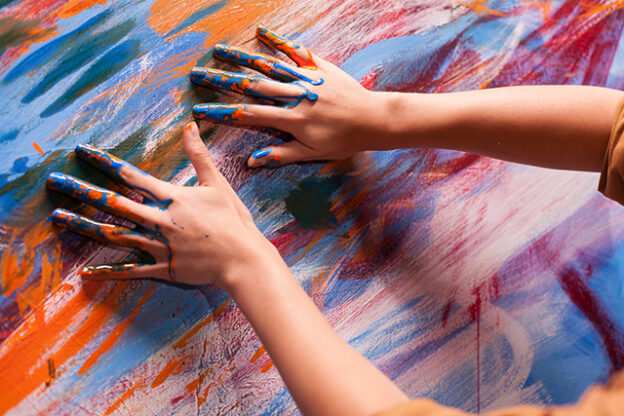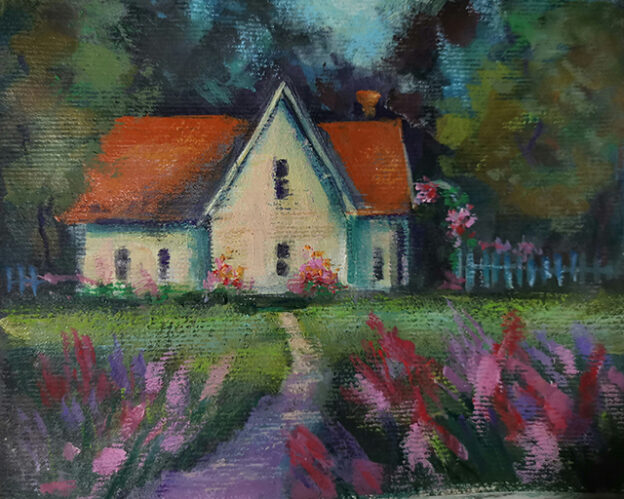Art has a unique way of capturing the human experience, evoking emotions, and sparking conversations that transcend time and culture. Among the myriad of famous artworks, one painting that continues to fascinate and inspire viewers is the depiction of hands reaching out to each other. This iconic imagery, often referred to as the “Creation of Adam,” is part of the Sistine Chapel’s ceiling in Vatican City, painted by the legendary Renaissance artist Michelangelo. In this article, we will explore the historical significance, artistic techniques, and enduring impact of this remarkable hands touching painting.
Historical Context
The “Creation of Adam” is a fresco painting that forms part of the Sistine Chapel’s ceiling, which was commissioned by Pope Julius II and painted by Michelangelo between 1508 and 1512. The Sistine Chapel itself is a cornerstone of the Vatican’s artistic and religious heritage, serving as the site of papal conclaves and other significant ceremonies.
Michelangelo’s commission to paint the ceiling was a monumental task, both in scale and artistic complexity. The ceiling is adorned with scenes from the Book of Genesis, including the creation, fall, and redemption of humanity. Among these scenes, the “Creation of Adam” stands out for its profound depiction of the moment when God imparts life to Adam.
Artistic Analysis
The “Creation of Adam” is celebrated not only for its theological significance but also for its masterful execution. The composition centers on two nearly touching hands – God’s outstretched hand reaching towards Adam’s hand, which is slightly extended in a languid pose. This nearly imperceptible gap between the fingertips has become one of the most recognizable and powerful images in art history.
- Composition and Symbolism: The composition of the painting is a study in contrasts and balances. God is depicted as a dynamic, muscular figure surrounded by a host of angels, symbolizing divine power and majesty. In contrast, Adam’s form is more relaxed and passive, symbolizing his incomplete and dependent nature before receiving the divine spark of life.
- Use of Light and Color: Michelangelo’s use of light and color enhances the dramatic impact of the scene. The luminous glow around God’s figure emphasizes His divinity and separates Him from the earthly Adam. The use of soft, flesh-toned hues for Adam and more vivid, celestial colors for God creates a visual distinction between the mortal and the divine.
- Anatomical Precision: Michelangelo’s mastery of human anatomy is evident in the detailed rendering of the figures. The musculature and proportions of both God and Adam reflect Michelangelo’s deep understanding of the human form, which he gained through extensive study and dissection.
Theological Implications
The “Creation of Adam” carries profound theological implications, reflecting Renaissance humanism and the intersection of divine and human realms. The nearly touching hands symbolize the moment of creation, where God’s touch imparts the spark of life and humanity to Adam. This act of creation emphasizes the intimate relationship between the Creator and the created, highlighting the belief in humanity’s inherent dignity and potential.
Moreover, the painting can be interpreted as a representation of the imago Dei – the concept that humans are created in the image of God. The mirrored postures of God and Adam suggest a reflection of divinity within humanity, reinforcing the idea that humans possess a unique connection to the divine.
Cultural Impact and Legacy
The “Creation of Adam” has transcended its religious origins to become a cultural icon, referenced and parodied in various forms of media, including literature, film, and advertising. Its imagery has been reproduced on countless posters, T-shirts, and other merchandise, attesting to its enduring popularity and universal appeal.
- Influence on Art and Literature: The painting’s influence extends beyond visual art into literature and philosophy. Writers and thinkers have drawn inspiration from the image of hands reaching out, using it as a metaphor for human aspiration, creativity, and the quest for meaning.
- Popular Culture: In popular culture, the hands touching painting has been parodied and reimagined in numerous ways. From comedic interpretations in cartoons to thought-provoking reinterpretations in modern art, the image continues to resonate with contemporary audiences.
- Educational Value: The “Creation of Adam” serves as an invaluable educational tool, offering insights into Renaissance art, theology, and the human condition. Art historians and educators use the painting to teach concepts such as composition, symbolism, and the impact of religious beliefs on art.
Preservation and Restoration
The Sistine Chapel’s ceiling, including the “Creation of Adam,” has undergone several restoration efforts to preserve its beauty and integrity. Over centuries, the frescoes were subjected to environmental factors, such as smoke from candles and pollution, which caused discoloration and damage.
The most significant restoration project took place between 1980 and 1994, when a team of experts meticulously cleaned and restored the frescoes. This restoration revealed Michelangelo’s original vibrant colors and intricate details, allowing contemporary viewers to appreciate the painting in a state closer to its original glory.
Appreciating the Masterpiece Today
Today, the “Creation of Adam” continues to attract millions of visitors to the Sistine Chapel, where they can marvel at Michelangelo’s genius and the profound symbolism of the hands touching painting. For those who cannot visit in person, high-quality reproductions and digital tours provide opportunities to experience and study this iconic work of art.
Conclusion
The “Creation of Adam” is more than just a painting; it is a timeless representation of humanity’s relationship with the divine and a testament to Michelangelo’s artistic brilliance. Its enduring impact and universal appeal make it one of the most celebrated artworks in history. As we continue to explore and appreciate this masterpiece, we are reminded of the power of art to connect us with our shared human experience and the mysteries of existence. The hands touching painting remains a symbol of creation, connection, and the enduring quest for understanding, inspiring generations of viewers to reach out and touch the divine in their own lives. Get more information about hand painting.



